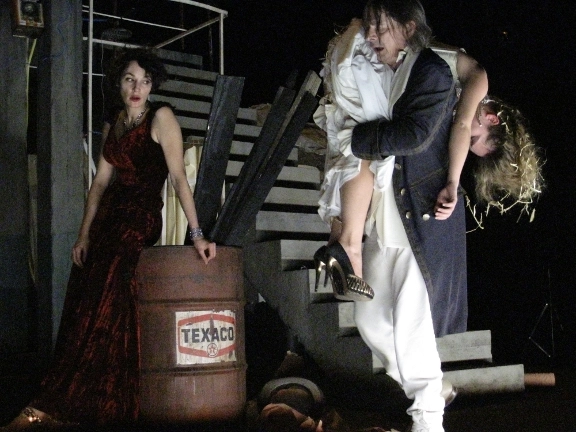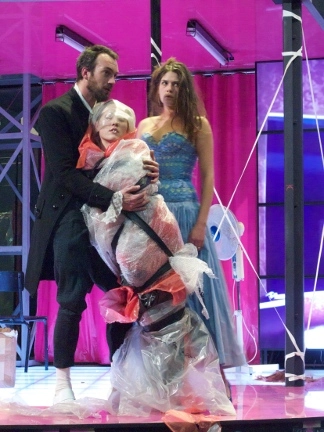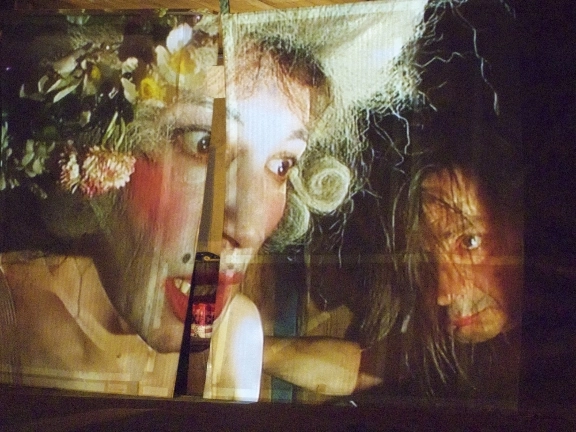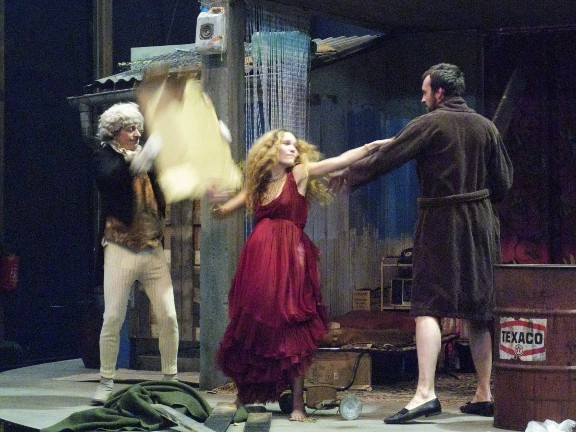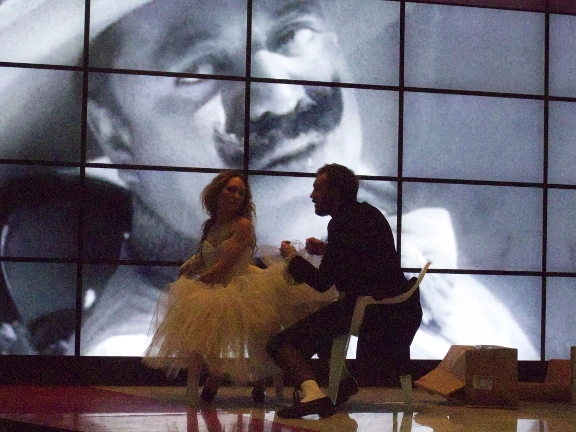The Lady with the Camellias
January 07 2012 to February 04 2012
She died in 1847, from a chest illness, at the age of twenty-three.
Alexandre Dumas Jr
Modern bourgeois individualism has some of its roots in romanticism. Frank Castorf has just explored its masculine side with his production of Kean. During the entire length of his unforgettable show, performed last year at the Odéon, the hero, worshipped and denigrated, an unrivalled Shakespearean performer, drifted freely between his original class and the world of high society, which tolerated him but never welcomed him into its midst. This season Castorf moves from one myth to the other – from Dumas père to Dumas fils, from Kean to Marguerite Gautier, from the absolute actor to the kept woman. And also – and the event is rare enough to be remarked upon – from a German theater company to one with brilliant French actors and actresses, including Jean-Damien Barbin and Jeanne Balibar. But which Lady of the Camellias are we talking about? This is not an idle question. Castorf, a versatile and committed ironist, has no equal when it comes to re-creating classics and extracting from them the most provocative dissonances. The enfant terrible of the GDR (former East Germany), who grew up to the rhythms of counter-culture American rock and the films of Fellini, Godard, Wajda, Truffaut and Kubrick, made a name for himself right from his earliest productions: deemed indecent by the censors they were taken off the stage. At the end of a lawsuit against the authorities, which he won, he was sent off to Anklam, a godforsaken hole in the middle of nowhere; but there he could stage Heiner Müller, Artaud, Brecht and Shakespeare. However, the censors still had him in their sights, and he was fired in 1985. Shortly after the collapse of the Berlin Wall he took over as the head of the Volksbühne; but this did not tame him in the least. He put on works by Sartre, Dostoevsky, Houellebecq, Döblin, Bulgakov, Tennessee Williams, Pitigrilli, Anderson, in each case imposing his iconoclastic visions. So what approach will he take in staging the legendary Marguerite Gautier? From the very beginning her story was continuously adapted, reworked: Alexandre Dumas fils himself reworked and rewrote his 1848 text, then wrote the 1852 stage adaptation; a year later La Traviata was created for the Fenice Theater in Venice; but it was from May 1854 on that Marguerite, transformed into Violetta thanks to Piave and Verdi, definitively became a myth (a myth to which Barthes devotes several pages in his Mythologies). In the course of her numerous reincarnations her sad fate lost some of its power to provoke but perhaps gained in the process a certain lyric subtlety. But Castorf is more interested in the earlier, romantic version, and in the social dimensions of a plot in which the liberty of a woman who has nothing but contempt for morality explodes with utter insolence as she dominates her partners and proclaims her independence – in short, threatening the established bourgeois order and its pillars: the family, and patriarchal laws. It’s thus not melodrama but the novel which will provide Castorf with his basic subject matter and enable him to restore to Marguerite, above and beyond La Traviata, all of her troubling, dangerous critical power.
